Leer en ladino/Judeo-español de los balcanes más abajo
THE JEWS ON THE BALKANS
short review
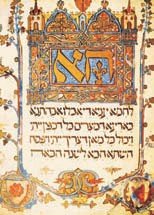 The Jews that settled in the Balkans have brought the Bible, alphabets, names, languages, monotheism, Christianity, Islamic literature, ancient and modern sciences, European literature, art, and the basis of European ethics. They perished in the crematoria of the holocaust. Some believe they will come again.
The Jews that settled in the Balkans have brought the Bible, alphabets, names, languages, monotheism, Christianity, Islamic literature, ancient and modern sciences, European literature, art, and the basis of European ethics. They perished in the crematoria of the holocaust. Some believe they will come again.
Ancient Hebrews and Semites had influenced Homer’s world (according to Victor Berard). Alexander the Great spread their fame and a new language – Yevanic (Hebrew-Koine). Named Romaniotes at the time of the Roman Empire, they settled in Salonica, Crete, Corfu, Rhodes, Athens, Patras, Halkis, Yanina (as the main center), and along Via Ignatia in Bitola (Monastir), Skopje (Skupi), Shtip (Astibo), Ohrid and Strumica, places that had spread early Christianity. As well the oldest synagogue in the Balkans (1st-2nd century AD) was discovered in Stobi.
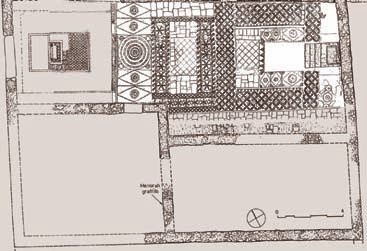
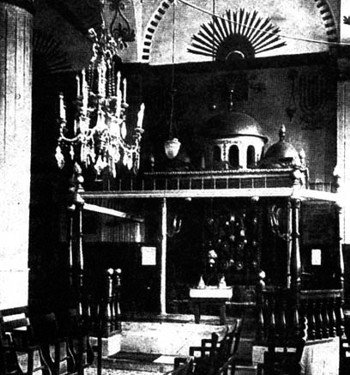
Byzantine laws were very rough and restrictive towards the Jews (especially under the rule of Justinian and Basil II). Crusaders set fire to their houses and brought devastation. When they converted to Judaism, the Khazars, the had a positive influence, including the development of the Cyrillic alphabet. Famous Jewish thinkers were Tobias, Meir, Munk, De Tudela and Ben Kalonymos (11th-13th century).
After the expulsion of the Sephardim (Jews from Spain and Portugal) in 1492 and 1498, the benevolent generosity of Sultan Bayezid II brought them freedom, as witnessed by the rights they enjoyed under the Ottoman Empire. Bitola had nine synagogues, Skopje three and Shtip had two. The famous prophet Nathan of Gaza was buried in Skopje in the 16th century.
They spoke Ladino (Judeo-Spanish), using the Bible of Ferara. Their wealth and glamour grew until the death of Suleiman the Magnificent (in the 16th century), and then steadily declined until the 20th century.
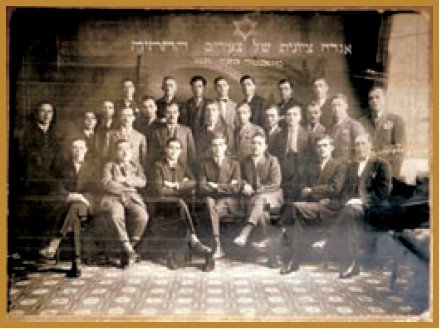
At the beginning of the 19th century they started to emigrate to USA, France, Chile, and the Holy Land. History talks about the participation by the Jews in the Macedonian revolution (the Ilinden leader Raphael Kamhi, Dimitar Vlachov – supporter of Ben Gurion on fatherland demands), and in the Young-Turkish revolution, and later on, they joined the visions of the reformer Mustapha Kemal Pasha Ataturk.
On April 6, 1941, Yugoslavia was occupied by Nazi Germany. Macedonia, Thrace, and South Serbia were delivered to the Bulgarian Nazi Government. The “Law for Protection of the Nation” (similar to the Nuremberg Act of 1936) was signed by King Boris III enforcing the wearing of the yellow star, along with numerous prohibitions, such as marriages and business with non-Jews, prohibited agriculture, professorship and higher education, limited heating and food, and executed 30% immediate confiscations. A secret agreement for the deportation of all Jews was agreed by King Boris III and Bekerle (Eichman’s subordinate), and witnessed by Prime Minister B. Filov.
The Bulgarian Jews were arrested but not deported, due to the confrontation of such authorities as D. Peshev and Patriarch Kiril, as well as because of the approaching Russian Army. On the other hand, the Macedonian (7.148, or 98% of the Jewish population!), Thracian (5.000) and South Serbian (3.000) Jews were “traded off”, arrested (in Skopje in the Tobaco Monopole), then deported to Treblinka and exterminated.
Detailed German lists show that half of the victims were children.
The Jews from Greece (65.000) were deported to Auschwitz, tortured in biomedical experiments (under Dr. Clauberg), and murdered.
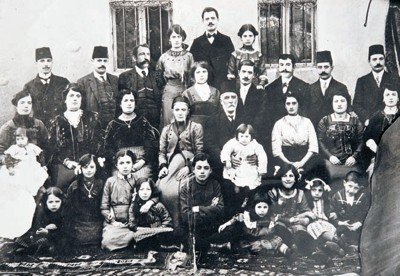
Jews joined the resistance movement as direct combatants, organizers and background supporters, most of them loosing their lives, including the national heroine Estrea Ovadia. Nazi criminals Wisliceny, Stroop and Bogdan Filov were executed, while Brunner, Bekerle, Kurt Waldheim, Dr. Clauberg, King Boris III, Gabrovski, Belev – were never tried.
The Macedonian Jewish Community was restored in December 1944, from almost 50 survivors, most emigrating to Israel in 1948. Today, the community has slightly more than 200 members.
According to the Law on Denationalization* enacted in 2000, the properties of Jews, victims of the holocaust without legal heirs, are transferred to the Holocaust Fund of the Jews in Macedonia.
The Board is shared by the Macedonian Government and the Jewish Community. The first task of the Fund is to build the Macedonian Holocaust Memorial Center, for the purpose of holocaust memory, teaching tolerance at all levels to all ages, developing the vision of a new life, of new societies, with dignity and prosperity for all nations, and with a strong influence on the moral attitudes everywhere.
Prof. Dr. Samuel Sadikario
![]()
LOS DJUDIOS DE LOS BALKANES
en la istoriya

Los Djudios de los Balkanes trusheron la Biblia, l’alfabeto, los nombres, las lenguas, el monoteizmo, el kristianizmo, la literatura i ovras del mundo muslumano, las erensias antikas i modernas, la kultura evropea, los artes i la baze etika evropea. Disparesieron a los krematoriumes de la Shoa. Algunos kreyen ke demuevo van atornar!
Los Djudios antikos i semites influensaron el mundo de Homer (Victor Berard). Aleksandro el grande konstruksio su mundo kon mueva lengua – Yavani (Hebrea-Koine), yamados Romaniotes a la Imperia Romana.
Estos se aresentaron a Salonika, Kreta, Korfu, Rodos, Atena, Patras, Halkis i Yanina (sentro prensipal) i a la longura del kamino Via Ignasia – Bitola (Monastir), Skopje (Uskub), Shtip (Asibo), Ohrida i Strumica, i aki se amostro el empesijo del kristianizmo. La mas vyeja sinagoga de los Balkanes es topada a Stobi (1-2 sieklo).
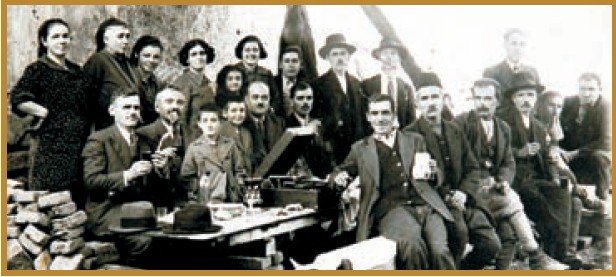
Las leyes bizantinas eran restriktivas para los Djudios (Justinian, Vasilye 2). Los kruseros los kemaro i devastaron. Los Hazanjeros teniyan grande influesa i tambien fundaron las letras sirilikas. Selebros eran los pensadores Tobias, Meir, Munk, De Tudela i Ben Kalonimos (11-13 sieklo).
Despues de la expulsion de los Sefardíes de la Espanya i el Portugal en los anyos 1492 i 1498 , la bunda del sultan Bayazid II lis trucho la libertad.
Monastir tiniya 9 sinagogas, Skopje 3. Favlavan ladino i la empleyava la Biblia de Ferrare. Natan de Gaza fuey enterado a Skopje. Los Sefardées stuvyeron briyando, i la rikeza stava amichugando fista la muerte del Majeste Suleyman depues del kual diskayeron fista el 20 sieklo. Muchos emigraron en America, Francia, Chile i la Tiyera Santa.
Los Djudios tomaron parte a la revolusion macedoniana i turka (komandante Rafael Kamhi, Dimitar Vlahov lo sustenio a Ben Gurion a la demanda para su patria) i despues se adjuntaron kon Kemal Pacha Ataturk.
Al 6 avril 1941 anyo la Jugoslavia fuey okupada de l’Almania natsista.
La Makedonia, Trakia i el sud de la Serbia fueron entregadas al guverno natsistiko bulgaro. La ley “Proteksion de la nasion” simijante de la ley de Nirnberg 1936, era afirmada del Rey Boris III, forsaron yevar la estreja amarija, defindendo de kazar i lavorar para ganar kon no Djudios, defindyeron la agrikultura, edukasion, ensenyansa superior, sanksion de kayentar kon lenya i mantinision, konfiskasion direkta de 30%. Egziste kontrado sekreto entre el Rey Boris III i Bekerle (subordinado de Eihman I testido el Presidente Filov). Los Djudios bulgaros eran emprisonados ma no deportados, gracias de D. Peshev, presbitero Kiril i la serkansia de la armada rusa. Al kontrario, los Djudios (7.148, 98% des todos) de la Makedonia, de la Trakia (5.000), i de la Serbia del Sud (3.000) fueron “kalkulados”, imprizonados al los monopolis a Skopje i Trakia, deportados a Treblinka i eksterminados. Las listas almanas mostran ke la meata eran kriyaturas. Los Djudios de Gresia (65.000) fueron deportados a Auschwitz, maltretados kon eksperimentos biomedical (Dr. Klauberg) i los mataron.
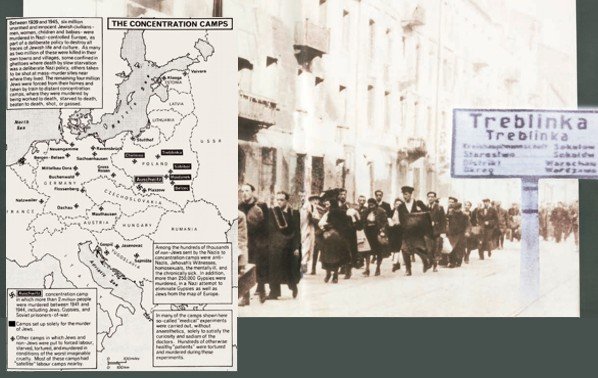
A la rezistensia los Djudios eran kombatantes, organizatores i faktores a los partizanes. Muchos perdyeron la vida endjusto i la eroina Yugoslavika
Esreya Ovadya. Los kriminales natsistas Visleni, Strop i Bogdan Filov fueron egzekutados, malgrado Bruner, Bekerle, Kurt Waldheim, Klauberg, el rey Boris III, Gabrovski, Belev, no fueron akuzados ningua ves La komunita djudia se renuvo al disimbre 1944 anyo kon entre 50 survivados, las mas grande parti emigraron 1948 en Israel. Oy, la komunita tyene 200 membros.
Kon la Ley de la denasionalizasion* los bienes de los ke no egizisten eridores, suditos maedonianos entraron al Fundo del Holokausto de los Djudios de la Makedonia, kon obligasiones de rekordos del Holokausto,
ambezar la tolerancia por todos los nivelos i adultos, vizorio de vida mueva, sosyeta mueva, i fuerte influenza para el komporte moral en todas las partes.
Prof. Dr. Samuel Sadikario
![]()
Photos were used from private collections and from the City Museum of Skopje collection
Fuente: Holocaust Memorial Center of Jews from Macedonia
 eSefarad Noticias del Mundo Sefaradi
eSefarad Noticias del Mundo Sefaradi

